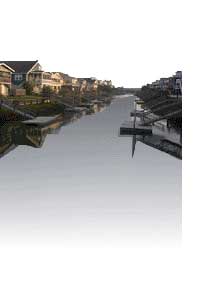San Fernando Valley,
valley and residential and industrial region in southern California, located north of central Los Angeles.
It is loosely bounded by the Transverse Range
on the north, the Santa Susana Mountains on the west, and the Santa Monica Mountains on the south. The valley
extends from Glendale, in the east, to Chatsworth, in the
west, for a distance of 40 km (25 mi); its maximum width is about 18 km (about 11 mi).
Industries include aircraft
and computer manufacturing. The valley also is a center of the entertainment industry; several motion-picture and television
studios are located here. It is the site of the California State University at Northridge (1958). Cahuenga Pass, which connects the valley to Hollywood
and downtown Los Angeles, was the site in 1847 of the signing of the treaty that ended the
Mexican War in California.
The San
Fernando Valley is named for a mission founded there in 1797. For much of the 19th century the valley was used
for livestock and wheat production. With the coming of the railroad in 1874, land prices began to increase, and real estate
development began in earnest in the 1880s. When water was brought in by pipeline from the Sierra Nevada in 1913, the valley's
pastoral setting began to give way to a more urban and suburban environment, spawning the cities of Burbank, Glendale, and
San Fernando, and the unincorporated neighborhoods of Encino, Tarzana, Northridge, Chatsworth, and Sherman Oaks. In 1915,
the city of Los Angeles annexed the entire San Fernando Valley, with the exception of Burbank, Glendale, and San Fernando.
Immediately after World
War II (1939-1945), the San Fernando Valley underwent another period of growth as sprawling
groups of houses were built for veterans and their families. Today the valley's population is more than 1.3 million, up from
1 million in 1980. A devastating earthquake, centered in Northridge and measuring 6.7 on the Richter scale, struck the San Fernando Valley on January 17, 1994.
